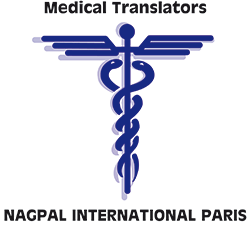
Medizinische Übersetzer
Paris • Cambridge • New York
65, rue Pascal 75013 Paris Frankreich
Tel: +33 (0)1 47 07 55 28
Fax: +33 (0)1 43 37 11 46
E-mail:
Mitteilung des Vorsitzenden
zum Thema Qualität
Qualitätsrichtlinien für unsere Übersetzer
Beispiele unserer Arbeit
Water Iodination in Africa (von Französisch in Englisch)
EFFICACY OF A SYSTEM OF WATER
IODINATION IN THE FIGHT AGAINST
IODINE DEFICIENCY
IN CENTRAL AFRICA
By
D.YAZIPO, Ministère de la Santé Publique, Bangui, Central African Republic.
L.FIO NGAINDIRO, Ministère de la Santé Publique, Bangui, Central African Republic.
L. BARRIERE-CONSTANTIN, Bangui, Central African Republic.
L. NAMBOUA, Ministère de la Santé Publique, Bangui, Central African Republic.
E. PICHARD, École Nationale de Médecine et de Pharmacie, BP 1679, Bamako, Mali.
J.NDOYO, Ministère de la Santé Publique, Bangui, Central African Republic.
P.BOURDOUX, Laboratoire de Pédiatrie, Université Libre de Bruxelles, Belgium.
SUMMARY
Disorders due to iodine deficiency represent a major public health problem in most developing countries. For socio-economic reasons, iodination campaigns based mainly on the use of iodinated salt have not, so far, been successful. In this study involving 80,000 people, we tested the efficacy of an iodine diffusion system placed in the tube-wells of Nana-Grebizi Prefecture of the Central African Republic.
A sample of 3,090 subjects, from 14 villages was selected to study the efficacy of the method. Initially, before the iodine diffusion systems were placed in the tube-wells of the area, the whole province was affected by severe iodine deficiency: the median urinary iodine was 2.1 mg/dL (n=319), the total prevalence of goiter was 60.9%, and the rate of visible goiters was 10.7% (n=3,090).
After 6 and 12 months, the median urinary iodine concentrations increased significantly (p<0.0001). The value at 12 months was 18.0 mg/dL (n=261), which is in line with the daily recommended intake of iodine. At the same time, the overall presence of goiter and visible goiter fell significantly (p<0.001) to 44.5% and 2.5%, respectively (n=2,645).